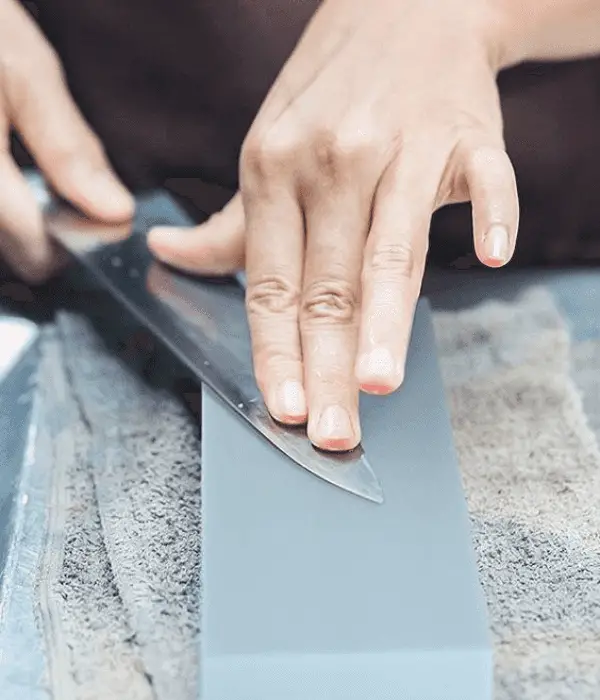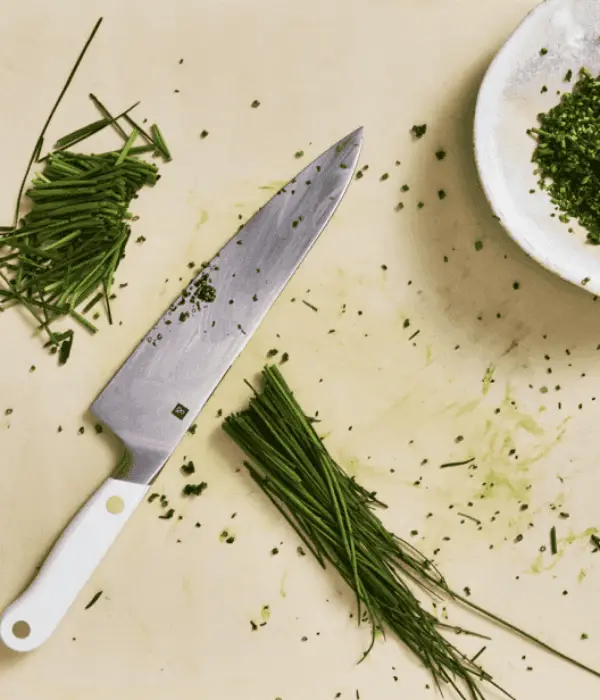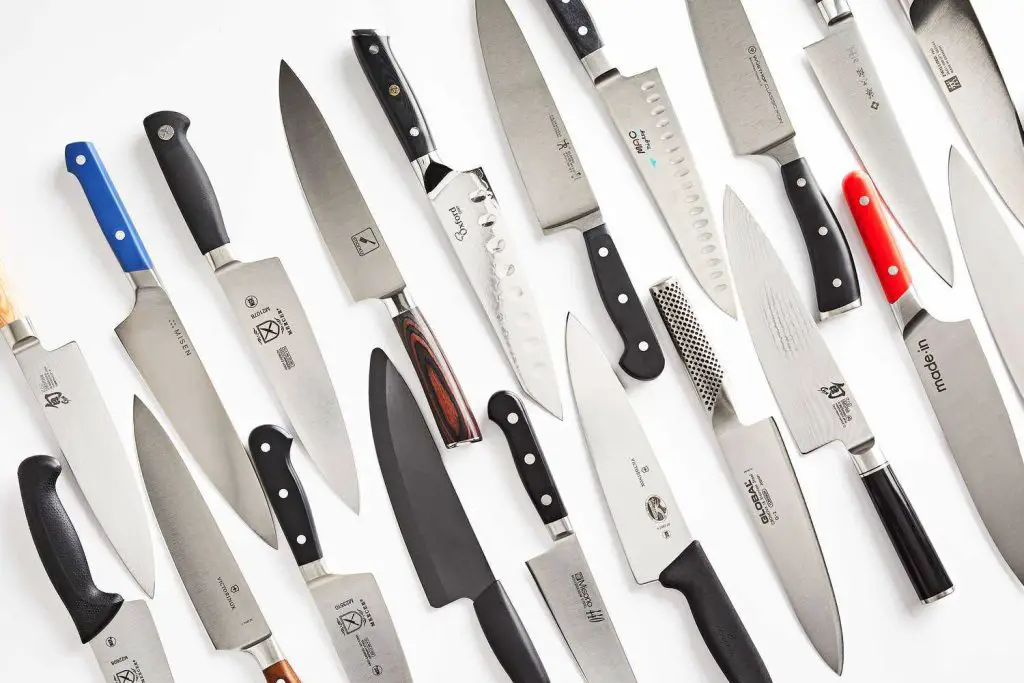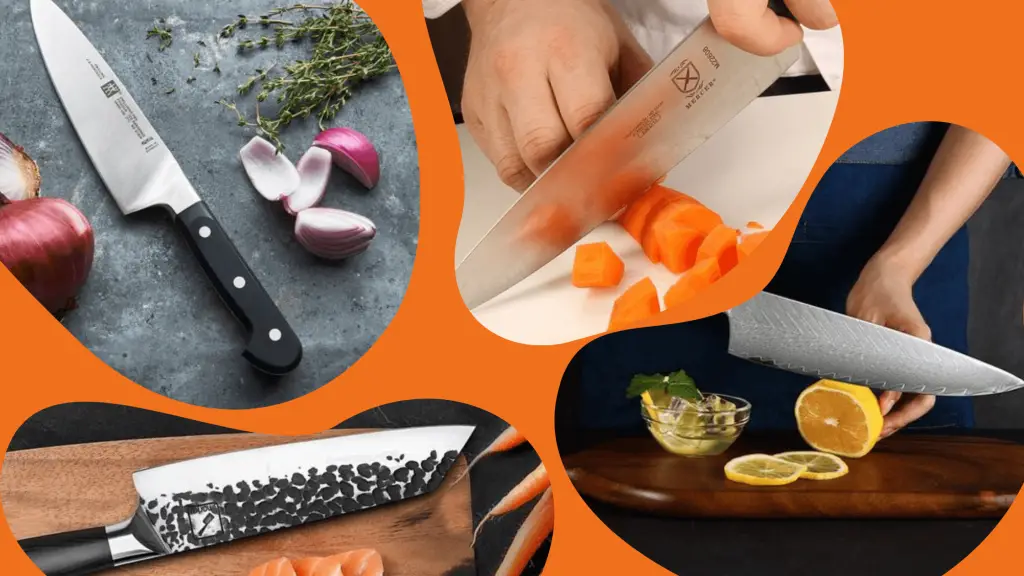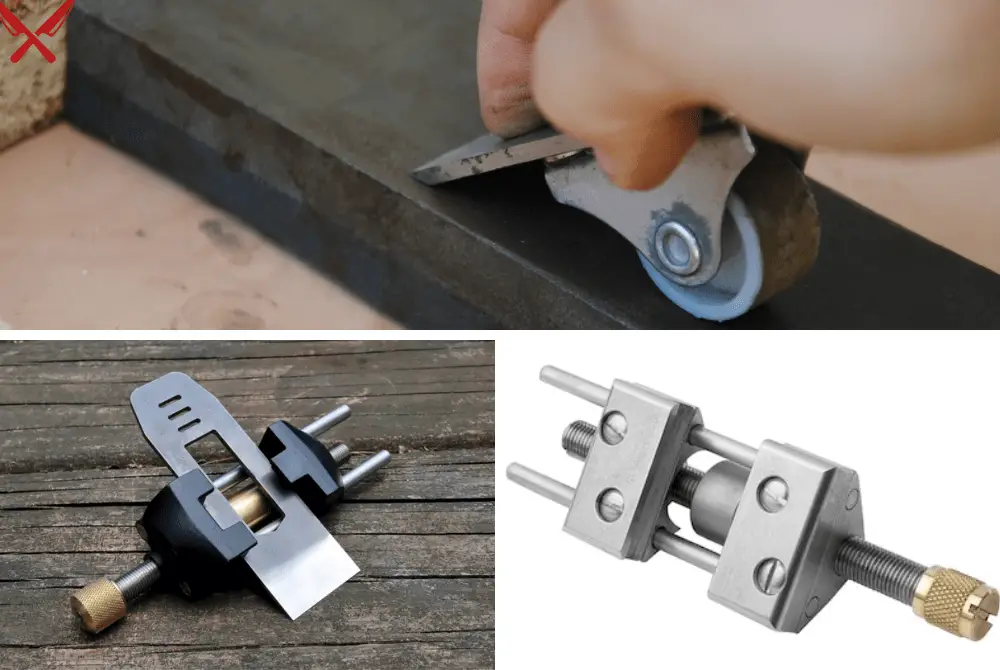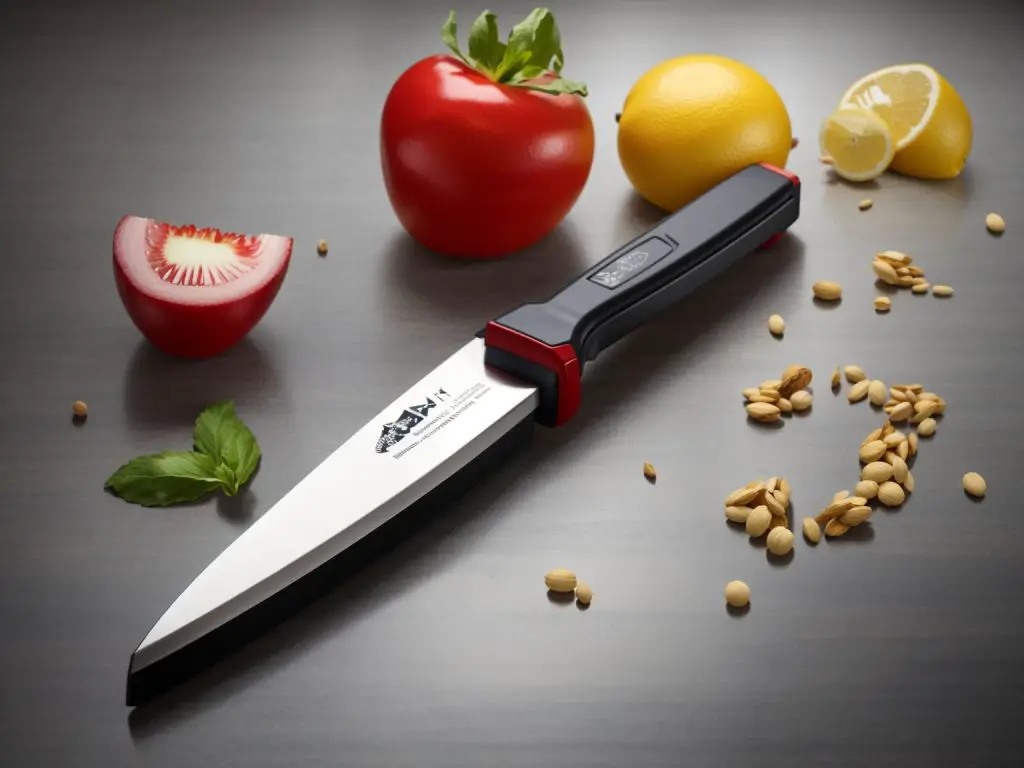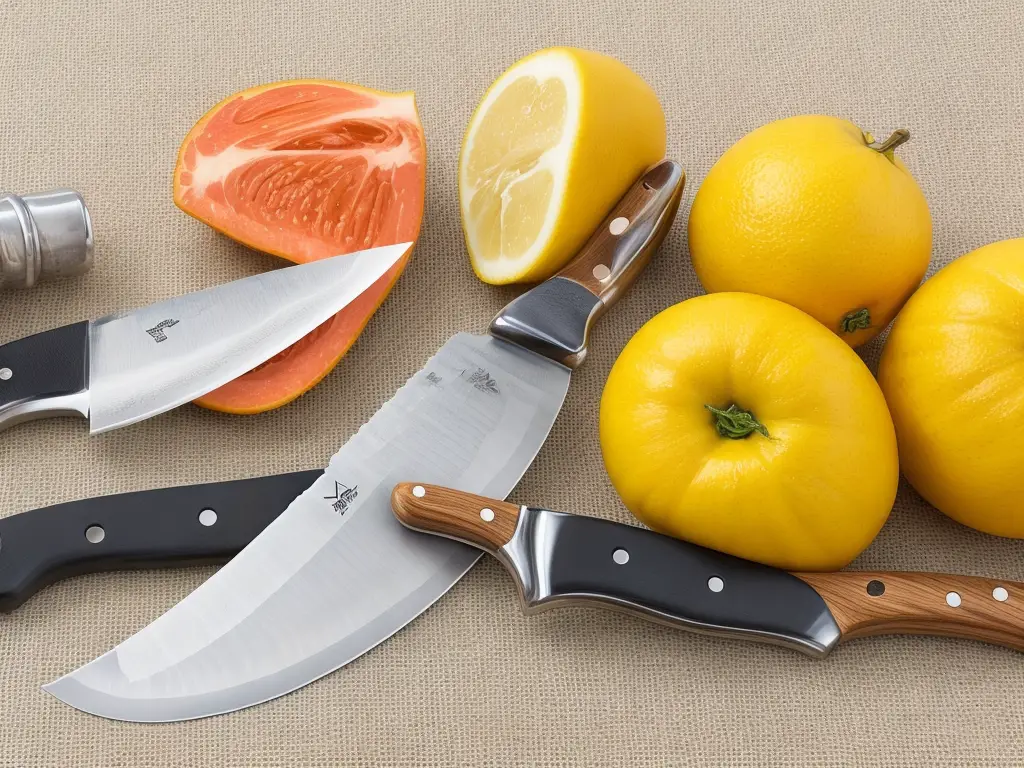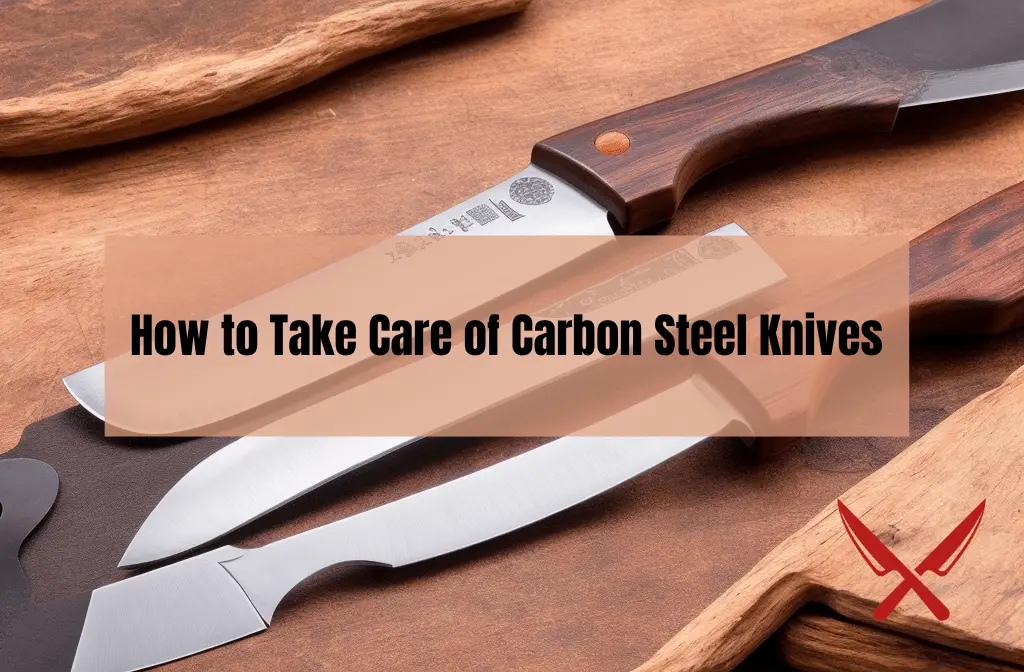
A professional kitchen knife is more than just a cutting tool—it’s a precision instrument that enhances the cooking experience. To fully grasp its capabilities, it’s important to understand the different parts of a pro kitchen knife and how they affect its performance.
In this article, we’ll explore the essential parts of a kitchen knife, from the blade to the handle, and see how they work together to create culinary perfection. Whether you’re a seasoned chef or a passionate home cook, understanding these parts will help you choose the right knife for your culinary endeavors. Get ready to discover the secrets behind the anatomy of a pro kitchen knife!
Note:This article will help you explore the essential components of a professional kitchen knife, providing readers with a comprehensive understanding of each part's role and significance in the overall functionality of the knife.
Functionality and Performance: Let’s Explore the Significance of Each Component
Blade – 1st Essential Parts of a Kitchen Knife
The blade is the most important part of a pro kitchen knife. It is the cutting edge that allows you to effortlessly cut, slice, and chop through various ingredients. The material, shape, and sharpness of the blade are crucial factors that determine how well the knife performs. The choice of material affects its durability and ability to maintain a sharp edge. The blade’s shape is designed to optimize specific cutting tasks, while the sharpness ensures precise and efficient cuts. A well-crafted blade is essential for achieving excellent results in the kitchen.
Different Blade Materials Commonly Used in Kitchen Knives
The choice of blade material greatly influences the performance, durability, and maintenance of a pro kitchen knife. Here are some commonly used blade materials:
Stainless Steel
Stainless steel blades are popular due to their corrosion resistance and ease of maintenance. They are generally durable and provide good overall performance in the kitchen.
High-Carbon Stainless Steel
This type of blade material combines the durability of stainless steel with excellent edge retention. It is known for maintaining a sharp edge for extended periods, making it ideal for professional use.
Damascus Steel:
Damascus steel blades are highly sought after for their exquisite aesthetics and exceptional sharpness. The blades are crafted by layering and forging multiple types of steel, resulting in a distinctive pattern and outstanding cutting performance.
Ceramic:
Ceramic blades are lightweight and known for their superior sharpness. They retain their edge for a long time and are resistant to rust and corrosion. However, they can be more brittle than other materials and require careful handling.
Carbon Steel:
Carbon steel blades are renowned for their exceptional sharpness and ease of sharpening. They hold a razor-sharp edge and are favored by professional chefs for precise cuts. However, they are prone to staining and require regular maintenance to prevent rust.
Each blade material offers its own set of advantages and considerations. When choosing a pro kitchen knife, it’s important to consider factors such as performance, maintenance, and personal preference to find the material that best suits your culinary needs.
Explore Various Blade Types in Pro Kitchen Knives
Pro kitchen knives come in various blade types, each designed for specific culinary tasks. Here are some commonly used blade types:
Chef’s Knife:
The chef’s knife is a versatile, go-to blade in professional kitchens. It features a broad, curved blade with a sharp tip. Its size and shape make it ideal for chopping, slicing, and dicing a wide range of ingredients.
Santoku Knife:
Hailing from Japan, the Santoku knife has gained popularity worldwide. It has a shorter, wider blade compared to a chef’s knife, offering a straighter cutting edge. The Santoku knife excels in precise slicing, dicing, and mincing, making it well-suited for vegetables, fish, and boneless meats.
Paring Knife:
The paring knife is a small, nimble blade with a pointed tip. It is designed for intricate tasks such as peeling, trimming, and precise cutting. It is particularly useful when working with smaller ingredients or for delicate work like deveining shrimp.
Serrated Knife:
A serrated knife features a blade with saw-like teeth along the edge. This type of blade is excellent for cutting through tough-skinned produce, crusty bread, or delicate items like tomatoes, as the serrations help prevent squishing or tearing.
Bread Knife:
Designed specifically for cutting bread, a bread knife has a long, serrated blade. The serrations allow the knife to glide through crusty bread without crushing it, ensuring clean and precise slices.
Cleaver knife:
The cleaver is characterized by its thick, heavy blade. It is designed for heavy-duty tasks such as splitting bones and chopping through thick cuts of meat. The weight and shape of the cleaver help provide power and leverage for efficient cutting.
These various blade types cater to different cutting needs in the kitchen, offering versatility, precision, and efficiency. Choosing the right blade type depends on the specific tasks you frequently perform and the ingredients you work with.
Blade Shapes and Their Purposes in Pro Kitchen Knives
The shape of a blade greatly influences its functionality and the tasks it excels at. Here are some common blade shapes found in pro kitchen knives and their purposes:
Straight Edge:
A straight-edge blade is the most traditional and versatile option. Its straight cutting edge provides maximum surface contact with the food, making it ideal for precise, controlled cuts like chopping, slicing, and dicing various ingredients.
Granton Edge:
A Granton edge blade features scalloped indentations or hollows along the edge. These small grooves create air pockets between the blade and the food, reducing friction and preventing ingredients from sticking to the blade. This blade shape is commonly found in slicing and carving knives, making it ideal for cutting thin, delicate slices of meat or fish without tearing.
Fillet Knife:
The fillet knife has a long, thin, and flexible blade specifically designed for filleting fish and deboning meat. The blade’s flexibility allows for delicate maneuvering around bones and following the contours of the meat or fish.
Serrated Edge:
A serrated edge blade has saw-like teeth along the cutting edge. These teeth grip and cut through tough-skinned produce, crusty bread, and other foods that have a hard exterior while maintaining the integrity of the softer interior. Serrated blades are particularly useful when a straight-edge blade might squish or damage the food.
Scalloped Edge:
A scalloped edge blade has rounded curves along the cutting edge, similar to small arches. This type of blade is often found in specialty knives, such as tomato knives, designed to effortlessly slice through softer-skinned produce without crushing or tearing.
By understanding the different blade shapes and their intended purposes, you can choose the right knife for specific tasks, ensuring precise and efficient cutting in your culinary endeavors.
Handle – 2nd Essential Parts of a Kitchen Knife
The handle provides grip and control during knife usage. A comfortable and ergonomic handle enables prolonged use without discomfort or fatigue.
Discuss the handle’s function in providing grip and control during knife usage.
The handle of a pro kitchen knife serves a crucial role in providing grip and control during knife usage. Here’s a discussion of its functions:
Grip:
The handle offers a secure grip, allowing you to hold the knife comfortably and firmly. It should fit well in your hand, promoting a natural and relaxed grip while providing stability and control over the blade.
Ergonomics:
A well-designed handle takes into consideration the ergonomics of the human hand. It may have contours, finger grooves, or a textured surface to enhance grip and prevent slipping. The ergonomic design reduces fatigue and ensures optimal control and maneuverability, even during extended periods of use.
Balance:
The handle contributes to the overall balance of the knife. A well-balanced knife feels comfortable and effortless to handle, reducing strain on the wrist and arm. It allows for precise cutting motions and enhances overall control over the blade.
Material:
The material used for the handle can impact its grip and durability. Common handle materials include wood, plastic, composite, or metal. Each material offers different qualities such as durability, resistance to moisture, and ease of maintenance. It’s important to choose a handle material that suits your preferences and provides a secure grip.
Safety:
The handle also plays a role in safety by providing a barrier between your hand and the sharp blade. It helps prevent accidental slips or injuries during knife usage, offering a protective element.
Explain different handle materials used in professional kitchen knives, such as wood, plastic, or composite.
The handle of a pro kitchen knife is not just a decorative feature but an essential component that enhances the overall experience and control over the blade. A well-designed handle ensures a comfortable grip, optimal balance, and safe handling, allowing you to wield the knife with precision and confidence in the kitchen.
Variety of handle materials
Professional kitchen knives can feature a variety of handle materials, each offering unique characteristics. Here’s an explanation of different handle materials commonly used in professional kitchen knives:
Wood:
Wood handles are appreciated for their natural beauty and comfortable grip. They provide a warm and traditional feel. Common wood types used include walnut, oak, and ebony. However, wood handles require regular maintenance to prevent drying or cracking and are generally not dishwasher-safe.
Plastic:
Plastic handles are popular for their durability, affordability, and ease of maintenance. They are lightweight and resistant to moisture, making them suitable for professional kitchen environments. Plastic handles often feature textured or ribbed patterns to enhance grip and prevent slippage.
Composite:
Composite handles are made by layering different materials, such as fiberglass or resin, to create a sturdy and resilient handle. This type of handle material offers excellent durability, resistance to moisture, and a comfortable grip. Composite handles are known for their longevity and suitability for heavy-duty kitchen tasks.
Stainless Steel:
Some professional kitchen knives feature stainless steel handles that match the blade’s material. Stainless steel handles provide a sleek and modern aesthetic. They are easy to clean, highly resistant to corrosion, and can withstand heavy use.
When choosing a handle material for a professional kitchen knife, consider factors such as durability, grip comfort, maintenance requirements, and personal preferences. It’s important to select a handle material that suits your needs and enhances your overall knife-handling experience in the kitchen.
Highlight the importance of ergonomic design for comfortable and safe handling.
The importance of ergonomic design for comfortable and safe handling of a professional kitchen knife can be summarized in short points:
- Ergonomic design ensures a comfortable grip, reducing strain and fatigue during prolonged use.
- It enhances safety by providing a secure grip, minimizing the risk of accidental slips.
- Ergonomic handles offer better control and maneuverability, allowing for precise cuts.
- Well-designed handles reduce strain on the wrist, hand, and arm.
- They promote a natural hand position, enabling chefs to work for longer periods without discomfort.
In essence, ergonomic design in knife handles prioritizes comfort, safety, control, and reduced strain, resulting in a more enjoyable and efficient cooking experience.
Tang
The tang is the extension of the blade into the handle. A full tang provides better balance, strength, and durability, ensuring a stable cutting experience.
Explain the significance of full tang and partial tang constructions.
The significance of full-tang and partial-tang constructions lies in their impact on a knife’s durability, balance, and overall performance.
Full Tang Construction:
Significance:
- Enhanced durability and strength.
- Improved balance and control.
- Greater stability during heavy-duty tasks.
Partial Tang Construction:
Significance:
- Versatility in design and handling materials.
- Potential for lighter weight.
- Allows for creative handle aesthetics.
In summary, full tang construction provides durability, balance, and stability, while partial tang construction offers versatility and design possibilities. The choice between the two depends on personal preferences and the intended use of the knife.
Discuss the advantages of full tang knives in terms of balance, strength, and durability.
Balance:
- Full tang knives have a better balance due to the even distribution of weight along the entire length of the knife.
- This balanced weight distribution improves control and maneuverability during cutting tasks.
- Strength:
- Full tang knives are stronger compared to their partial tang counterparts.
- The continuous extension of the blade into the handle provides greater structural integrity, reducing the risk of breakage or bending during heavy-duty use.
Durability:
- Full tang construction enhances the overall durability of the knife.
- The solid connection between the blade and handle ensures a more robust and long-lasting knife, capable of withstanding rigorous kitchen demands.
In summary, full-tang knives offer improved balance, increased strength, and enhanced durability. These qualities make them highly desirable for professional use and demanding kitchen tasks.
Bolster
Located between the blade and handle, the bolster adds stability, and balance, and protects fingers during cutting motions.
Introduce the bolster as the thick junction between the blade and handle.
The bolster is a thick junction located between the blade and handle of a knife. It serves as a significant feature in the knife’s construction.
Here’s a concise and simple explanation:
- Stability: It provides stability to the knife during use.
- Balance: The bolster contributes to the knife’s overall balance.
- Safety: It acts as a finger guard, protecting against accidental slips.
- Comfort: The bolster offers a comfortable grip by providing a resting point for the hand.
In summary, the bolster ensures stability, balance, safety, and comfort in a knife’s design.
Discuss the bolster’s role in enhancing balance, stability, and finger protection.
The bolster plays a crucial role in enhancing balance, stability, and finger protection in professional kitchen knives. Here’s a discussion of its significance:
Balance:
The bolster, located between the blade and handle, helps distribute the weight of the knife, contributing to its overall balance. This balanced weight distribution allows for better control and maneuverability during cutting tasks.
Stability:
The presence of a bolster adds stability to the knife. It provides a solid and sturdy connection between the blade and handle, minimizing any potential wobbling or movement while cutting. This stability enhances the precision and effectiveness of each cut.
Finger Protection:
The bolster acts as a finger guard, creating a physical barrier between the sharp blade and the hand. It helps prevent accidental slips or slides of the fingers onto the cutting edge, reducing the risk of injuries and enhancing safety during knife usage.
Mention different bolster designs found in professional kitchen knives.
Full Bolster:
A full bolster extends the entire width of the blade’s spine to the handle. It offers maximum finger protection and stability.
Half Bolster:
A half bolster covers only part of the spine, leaving the back portion of the blade exposed. This design allows for easier sharpening of the entire length of the blade.
No Bolster:
Some knives may have a handle design without a distinct bolster. This streamlined design provides a seamless transition between the blade and handle, allowing for a comfortable grip.
Each bolster design offers its own advantages, depending on the user’s preferences and intended use of the knife. Regardless of the specific design, the bolster serves as a critical component in professional kitchen knives, enhancing balance, stability, and finger protection during culinary tasks.
Edge
The cutting edge is where the blade meets the cutting surface. Different edge profiles, such as straight, serrated, or scalloped, offer varying benefits for specific tasks.
Explain the importance of the knife’s cutting edge.
The cutting edge is where the actual slicing, chopping, and cutting take place. A sharp and well-maintained edge enables efficient and precise cutting, ensuring clean and smooth results. The quality of the cutting edge greatly impacts the knife’s overall performance in the kitchen.
Discuss different edge grinds, such as V-shaped, double bevel, or single bevel.
Edge grinds refer to the shape and profile of the cutting edge. Different edge grinds offer varying benefits for specific cutting tasks. Some common edge grinds include:
V-shaped Edge:
This is a popular grind featuring two symmetrical bevels forming a V shape. It provides a good balance between sharpness and durability, making it versatile for various cutting tasks.
Double Bevel Edge:
Also known as a compound bevel, this grind features two separate bevels on each side of the blade, forming an angled edge. Double bevel edges are commonly found in Western-style knives and offer a balance between sharpness and strength.
Single Bevel Edge:
Single bevel edges, typically found in traditional Japanese knives, have only one bevel on one side of the blade. These edges offer exceptional sharpness and precision for specific cutting techniques like slicing sashimi or making precise vegetable cuts.
Highlight the impact of edge geometry on cutting performance and ease of sharpening.
- Edge geometry, including the angle and grind, directly affects cutting performance and ease of sharpening.
- A lower edge angle (15-20 degrees per side) creates a finer, sharper edge for precise cuts but may require more frequent sharpening.
- A higher edge angle (20-30 degrees per side) provides increased durability and edge retention, sacrificing some cutting sharpness.
- The choice of edge grind depends on the intended use and personal preferences.
- Understanding edge geometry helps select the right knife for specific tasks, balancing sharpness, durability, and maintenance.
- Regular maintenance and proper sharpening techniques are essential for optimal cutting performance and longevity of the knife.
Understanding the significance of each component empowers users to select the right knife for their needs and maximize its performance in the kitchen.
Provide tips on how to properly clean, store, and maintain a pro kitchen knife.
Properly cleaning, storing, and maintaining a pro kitchen knife is essential for its longevity and performance. Here are some tips to follow:
Cleaning:
- Clean the knife immediately after each use with warm water and mild dish soap.
- Use a non-abrasive sponge or cloth to gently clean the blade, handle, and bolster.
- Avoid soaking the knife or leaving it in the sink to prevent water damage or corrosion.
- Dry the knife thoroughly with a clean towel to remove all moisture.
Storage:
- Store the knife in a knife block, magnetic strip, or knife sheath to protect the blade and prevent accidents.
- Avoid storing knives in a cluttered drawer where they can rub against other utensils and become dull or damaged.
- Keep the knife in a secure location away from the reach of children.
Maintenance:
- Regularly inspect the knife for any signs of damage, such as chips or loose handles. If any issues are found, seek professional repair or replace the knife.
- Avoid cutting on hard surfaces like glass, ceramic plates, or marble, as it can damage the blade’s sharpness and integrity.
- Use a honing rod to straighten the blade’s edge regularly, which helps maintain its sharpness and prolongs the time between sharpening.
- Sharpen the knife when it starts to feel dull using a sharpening stone or professional sharpening service.
General Tips:
- Never put a knife in the dishwasher, as the harsh detergents and high heat can damage the blade and handle.
- Avoid using the knife for tasks it is not intended for, such as prying open cans or using it as a screwdriver.
- Handle the knife with care, ensuring you don’t drop it or subject it to unnecessary stress.
By following these tips, you can ensure that your pro kitchen knife remains in excellent condition, maintains its sharpness, and serves you well for a long time.
Discuss the importance of regular sharpening and honing for optimum performance.
Regular sharpening and honing are essential for maintaining the optimum performance of a pro kitchen knife. Here’s why they are important:
Sharpness:
Sharpening the knife restores its sharp cutting edge. Over time, the blade can become dull from use, and regular sharpening ensures it maintains its sharpness. A sharp knife is safer to use as it requires less force, reducing the risk of slips and accidents. It also provides precise and clean cuts, enhancing efficiency in the kitchen.
Cutting Performance:
A properly sharpened knife enhances its cutting performance. It enables effortless and smooth slicing, chopping, and dicing of ingredients. With a sharp blade, the knife glides through food with ease, allowing for more control and accuracy in your culinary tasks.
Longevity:
Regular sharpening and honing contribute to the longevity of the knife. Dull blades can lead to excessive force being applied during cutting, potentially causing damage to the blade or handle. By maintaining a sharp edge, you reduce the risk of chipping, bending, or other forms of damage, prolonging the lifespan of the knife.
Ease of Use:
A sharp knife requires less effort to cut through ingredients, reducing strain and fatigue during prolonged use. It makes your cooking experience more enjoyable and efficient, allowing you to work with greater precision and control.
Honing:
Honing, which involves using a honing rod, helps maintain the knife’s sharpness between sharpening sessions. It straightens the blade’s edge, aligning any microscopic deformations that may occur during use. Regular honing keeps the edge in optimal condition, delaying the need for sharpening.
Check out the Chefs Love Sharp Dressed Knives – Our Review of the 9-Piece Premium Kitchen Knife Set
Explore more very informational topics I researched with a lot of time on it and write for you guys so let’s read more articles about it …..
Knife Blade Materials and Types: Discuss the various materials used to make kitchen knife blades (e.g., stainless steel, carbon steel, ceramic) and explore the pros and cons of each type.
Knife Handle Materials and Design: Examine the different handle materials commonly used in kitchen knives (e.g., wood, plastic, metal, composite) and how they impact grip, comfort, and durability.
Conclusion
In summary, regular sharpening and honing are vital for optimum knife performance. They ensure sharpness, enhance cutting efficiency, promote longevity, and improve the overall kitchen experience. By incorporating these maintenance practices into your routine, you can enjoy the full potential of your pro kitchen knife.
Understanding the key components of a pro kitchen knife is crucial for selecting and using the right knife effectively. The significant parts to consider include the blade, handle, bolster, and cutting edge.
The blade is the heart of the knife, responsible for cutting, slicing, and chopping. Its material, shape, and sharpness determine its efficiency and precision. The handle provides grip, control, and balance during knife usage, while the bolster enhances stability and finger protection.
The cutting edge is where the actual cutting takes place, and its geometry impacts cutting performance and ease of sharpening. By understanding these components, one can make informed choices when selecting a pro kitchen knife that suits their needs and preferences.
I encourage readers to explore the wide range of pro kitchen knife options available, considering factors such as blade type, handle material, and edge grind. Finding the right knife that fits your hand and matches your cooking style will enhance your culinary experience and elevate your skills in the kitchen.
Remember, a kitchen knife is more than just a tool—it is an essential instrument that can elevate your cooking and bring precision to your culinary creations. Invest in a high-quality knife, understand its components, and enjoy the artistry of creating delicious meals with confidence and finesse.


